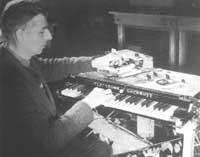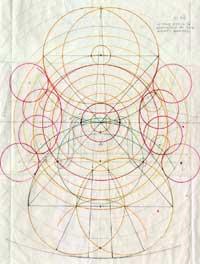What is digital sound?
2002/09/01 Roa Zubia, Guillermo - Elhuyar Zientzia Iturria: Elhuyar aldizkaria
What is digital sound? The answer to this question is quick if we know what sound is. In short, sound is nothing more than a wave that propagates in the air, and digitizing sound is to turn that wave into a succession of numbers. This sequence can be saved and manipulated on the computer. What the cinema of that country offered is, in short, the result of all this, at least justifying the price of the entry.
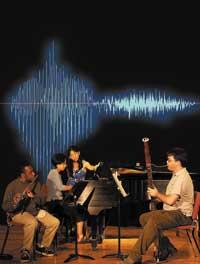
Many times the entry price ensures the digital quality of sound. But what does that mean? To answer this question we must analyze the above mentioned numbers. Since the sequence of numbers is the wave expression, the more numbers are used for a given range of sounds, the better expression will be obtained. It is clear, therefore, that that number of numbers must meet a minimum.
The 440 Hz waves perform 440 cycles in a second. And to correctly express the oscillations of the wave it is necessary to take at least 5 numbers per cycle. Therefore, 2,200 numbers (2.2 kHz) are needed to properly express this sound. However, higher frequencies require a greater number of numbers, so with a certain number the most frequent sounds are less represented than the least frequent ones.
Given the characteristics of the actual sounds, 44.1 kHz has been adopted as a quality standard, that is, 44.100 numbers should be taken to maintain a sound of a second with good quality. Is it not too much for the team of that cinema?
Sound sounds, low sounds
Another factor to be taken into account is that the values that can take these numbers are also reflected in the quality. For example, a scale of zero to ten can be used, that is, a scale in which the sound wave most often reaches value 10. But this scale does not usually have a great flexibility, it is almost impossible to distinguish the nuances of sound through a small scale. On the contrary, the scale used in the market is -32.768 to +32.768.
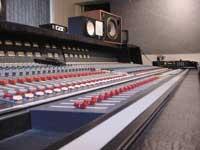
How has such a rare number been chosen? For the binary expression of the numbers. This range can reach a value of 65.536, is the number of numbers that can store 2 bytes in computer memory.
Therefore, to properly express the sound intensity, each number needs 2 bytes in memory and a second sound needs 44,100 numbers. Therefore, this sound will fill in the memory 88.200 bytes, ie, about 86 K. It is calculated that in the memory of a megabyte only 11.89 seconds can be stored. The digital sound below loses quality, as 44.1 kHz and 2 bytes are the 'quality CD' features.
Manipulation of numbers
However, regardless of its quality in CD, digital sound has other characteristics, since being a succession of numbers is easily manipulable. With only changing the numbers we are changing the sound. For example, by placing zeros instead of all the numbers of a time interval, we turn the interval silently; or if we divide all the numbers, we reduce the interval volume to half; etc. Although they are simple changes, the consequences are important.
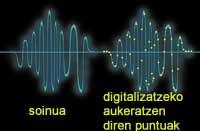
At the same time, the complex variations of numbers greatly increase the possibilities of sound manipulation. Thus, for example, sound effects (echoes, distortions, …) are produced, continuous background noise is reduced or eliminated, several frequencies are reinforced and others are weakened. On the other hand, they often produce an effect similar to that of a change in location of sound sources. There are many processes that are carried out before marketing the music on a disc.
In addition to the discs, the sounds of radio and television are digitally manipulated. The voice, for example, is treated by compression. This treatment establishes limits of intensity in the sound, thus limiting the signals from an amplitude to avoid sudden sound vertices. And all of them are just a few examples of digital manipulation. The number of opportunities depends on creativity. Therefore, the resulting sound and the original do not have much to see.
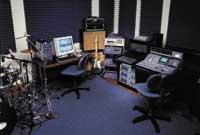
Is everything we hear on TV, radio, film and records computer? No, of course, but the computer is a very useful tool to manipulate that sound. In short, it is a series of numbers in which you can change the digital sound. And its quality depends on the memory you need. On a CD, for example, 44,100 numbers per second are stored, represented by 2 bytes each.
When the cinema of a lost town offers digital sound, it gives us the result of that treatment and not the treatment. Therefore, it is not cinema that needs a computer with great memory. But the sound no longer impresses us. We may be right to seduce when the image is also digital.
Sound, organized noise
Once the day is over, resting properly is not easy when the neighbor is learning to play the violin. It seems that the noise that occurs on the other side of the wall will overcome all the obstacles to avoid our rest. No wonder, the physics of sounds is a very complex subject. The violin threads, stirred by the air molecules, produce pressure waves. These waves provoke the vibration of the wall and thus are transmitted to the air of our room. There is no easy way to avoid transmission, so the neighbor's essay will be mandatory. If I learned to play the sikiera double bass! News News News
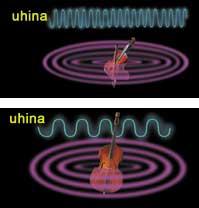
The wave of a 'la' given by the double bass is only 55 Hz. High frequencies generate high notes and low notes. In addition to the neighbor's violin, a soprano that breaks singing glasses produces high-frequency waves. But in addition to creating the right frequency, soprano has to sing aloud to break a cup.

The attenuated wave seen in the image, however, is ideal; the waves of real sounds are more complex. Although we hear a single note, harmonic frequencies intervene in sound. To the basic frequency are added other larger, but not any frequency, but multiples of the basic. This makes the structure of the wave more complex.
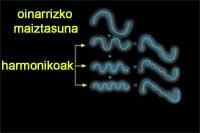
You have to take into account the timbres, harmonics, frequencies and amplitudes, is it not too much for the neighbor? While rehearsing, perhaps better being out of the house. After a few years he learns to control these complex waves. It will use the appropriate frequencies for the correct execution of the notes and will provide each note with the corresponding intensity, controlling the amplitude of the wave. On the other hand, the tone of other instruments will be used, giving more importance to harmonic frequencies than to others. Until then, the neighbor must be asked to soundproof the room so that the wave is not transmitted in any case.
The theorem of Nyquist: key to digitizing
The digitization of real sound (an analog wave) is a complex process. First, the microphone receives the vibration of the air and makes it an electrical signal that is then digitized. To do this, digital sound is a relationship of measures in which the tension changes constantly. In a single second can be thousands of measures.
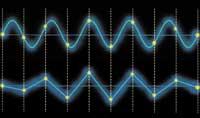
Therefore, the quality of digitization will depend on the number of measures taken per second. The CD recording standard is 44,100 measurements per second. Why? How have you reached that number? In short, it is a mathematical calculation based on the theorem of Nyquist.
According to the Nyquist theorem, to express by numbers the waves of a given frequency, each cycle must have at least two measures. For example, to represent by numbers a 5,000 Hz wave, we need at least 10,000 numbers per second.
Otherwise, the statement will not be adequate: Since in real sound there is no single frequency, this rule applies to the one of smaller wavelength. On the other hand, the sound that the human being can hear does not exceed 22,000 Hz, so the quality standard of digital sound has been set at 44.100 Hz.
PC and Macintosh Formerly digital sound was in the hands of a few, but with the development of computers it has also reached the consumer of the street. Music players are getting cheaper, as well as microphones, recorders, etc. Therefore, amateur recording studios in private households are becoming something usual. In a home study the computer is essential to work with digital sound. There are many good programs available, the current limit is the size of the memory, which has also skyrocketed on home computers. This software is capable of using a quality sound CD. The standard sound files on PC is the WAV extension and on Macintosh the AIFF extension. These files store, in short, the sound as explained in this article. However, in order for each file not to fulfill as much memory, other formats such as mp3 have become common. However, in these alternative formats the information is compressed, so the MP3 and AIFF files have lower sound quality than the MP3 files. |

Gai honi buruzko eduki gehiago
Elhuyarrek garatutako teknologia





